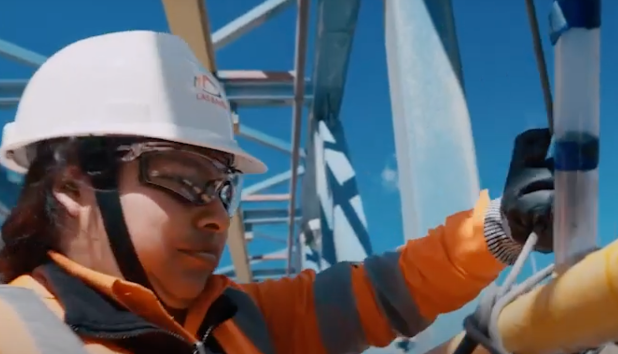Our Operations
The Las Bambas operation distinguishes by having more modern, efficient and world-class standards. Since our commercial production started in 2016, we have achieved positive annual production results of quality concentrate.
According to the United States Geological Survey (USGS), Peru remained as the world's second largest copper producer in 2017.
Our Operations
Las Bambas is an open-pit mine with complex components and intensive automation processes supported by cutting-edge technology and the most modern mining equipment.
Our current production process begins at the Ferrobamba pit. Ore is extracted, crushed and then, transported through a conveyor belt 5 km to a conventional flotation circuit, where copper and molybdenum concentrate is produced.
At Las Bambas, we aim at managing water resources efficiently and sustainably. The Challhuahuacho River is our main source of fresh water, however during the dry season, our water supply comes from a reservoir.
Most of the water used for our tailings and concentrate thickeners, as well as for our TSF, is reused in our production process. In 2021, our reused water percentage was over 96%.
Regarding concentrate transportation, we operate a bimodal system... The first stage consists of using encapsulated trucks to transport concentrate to the Pillones transfer station (between 138 and 139 km in the Arequipa - Puno railway line), and then transported by rail to the Matarani port in Arequipa.
Since 2016, we have conducted micro asphalt, road irrigation, and road maintenance works on nearly sixty kilometres surrounding our host communities to mitigate potential environmental impacts.

Tailings Storage Facilities (TSF)
At MMG, we prioritize the management of our TSFs as key material issues, demanding continuous and rigorous risk control. Enforcing mandatory minimum requirements for all sites, we cover the entire life cycle of dams and tailings facilities (strategic planning, design, operations, maintenance, inspections, emergency response, and closure) with a strong emphasis on protecting our people and the environment.
Our approach to these requirements, developed in collaboration with internal and external experts, not only satisfies regulatory demands within our host communities but also meets the standards set by the Australian National Committee on Large Dams (ANCOLD), the Canadian Dam Association (CDA), the Mining Association of Canada (MAC), and the recently published Global Industry Standard on Tailings Management (GISTM).
MMG applies critical design and operational requirements based on an annual risk assessment process for both operational and non-operational TSFs. The objective is to minimize environmental and community impacts, with a secondary goal of optimizing operational efficiency. Risk management and control measures undergo regular internal, external, and independent audits.
TSF integrity has drawn increased industry and stakeholder attention, prompted by recent upstream dam failures. MMG, including Las Bambas, predominantly employs downstream construction methods for engineered rockfill and earthfill structures. However, our Rosebery site in Australia features smaller facilities using a portion of upstream construction methods.
In 2016, the International Council on Mining and Metals (ICMM) issued a position statement on TSF catastrophic failure prevention. MMG's approach to TSF governance aligns with this framework, incorporating measures such as forming an Independent Dam Review Committee and assigning an Engineer of Record (EoR) at each TSF.
Supported by our Board and Executive Management Team, MMG provides the governance and resources required to ensure the safety of our equipment and environment. Continuous improvements consistently strengthen our TSF controls, compared with the reviews by dam safety committees and annual performance audits as defined by ANCOLD.
In August 2020, MMG, through our ICMM membership, contributed to the design of the new GISTM launched by the ICMM, in collaboration with the United Nations Environment Programme (UNEP) and the Principles for Responsible Investment (PRI). This standard applies to both existing and new facilities, aiming to prevent extreme consequences to the environment and people from TSF catastrophic failures. The GISTM comprises six topics:
- Topic I: Affected Communities
- Topic II: Integrated Knowledge Base
- Topic III: Design, Construction, Operation, and Monitoring of the Tailings Facility
- Topic IV: Management and Governance
- Topic V: Emergency Response and Long-Term Recovery
- Topic VI: Public Disclosure and Access to Information
The GISTM came into effect in August 2023. MMG is now working to ensure compliance with the standard and will collaborate with relevant stakeholders throughout the entire process. We are following the ICMM compliance timeline, ensuring that all MMG facilities with potential failure consequences categorized as 'Extreme' or 'Very High,' as defined by GISTM, meet the Standard within three years from August 5th, 2020. Additionally, all other facilities are expected to comply within five years.
Download MMG GISTM conformance summary
Download MMG Tailings Disclosure Table




